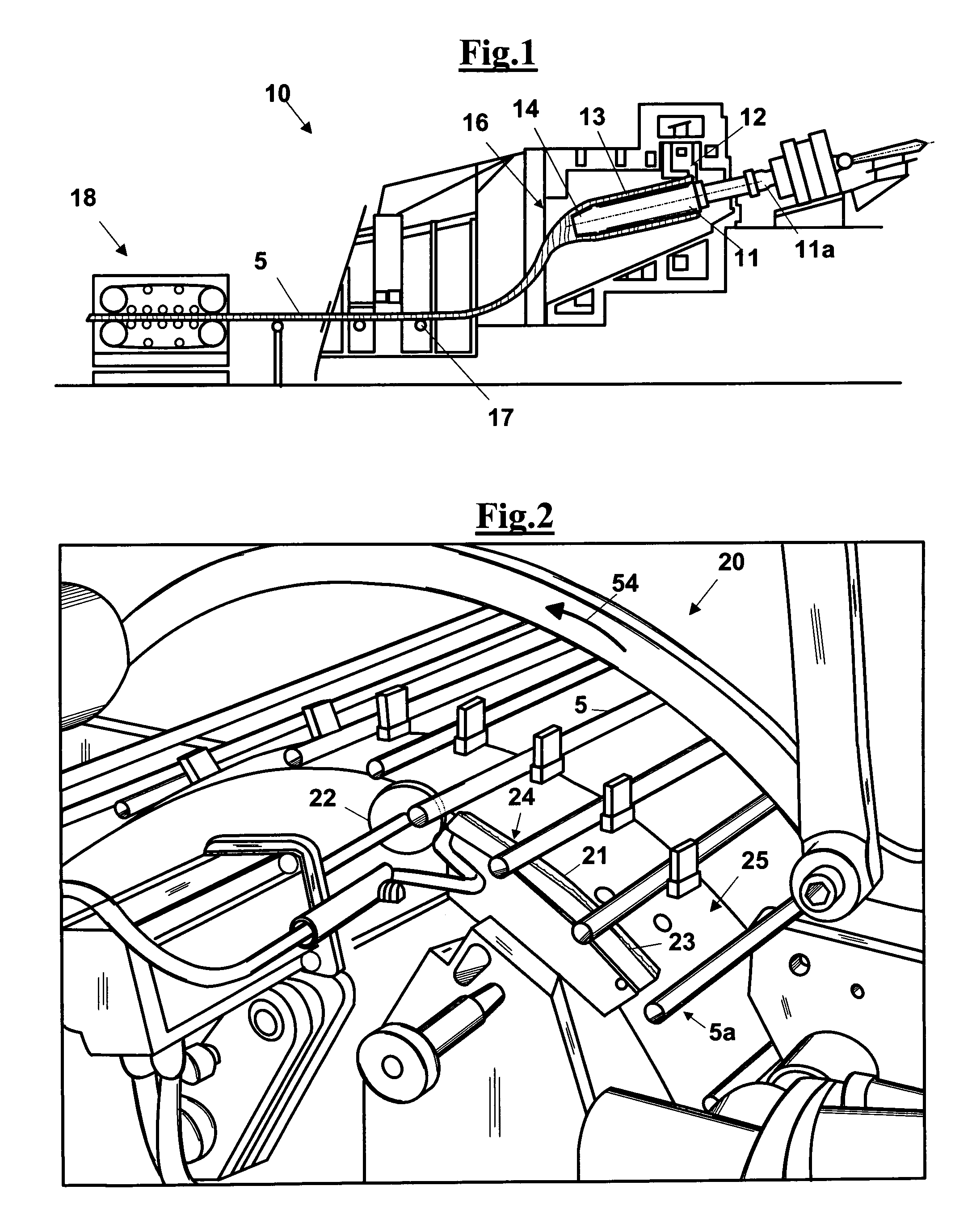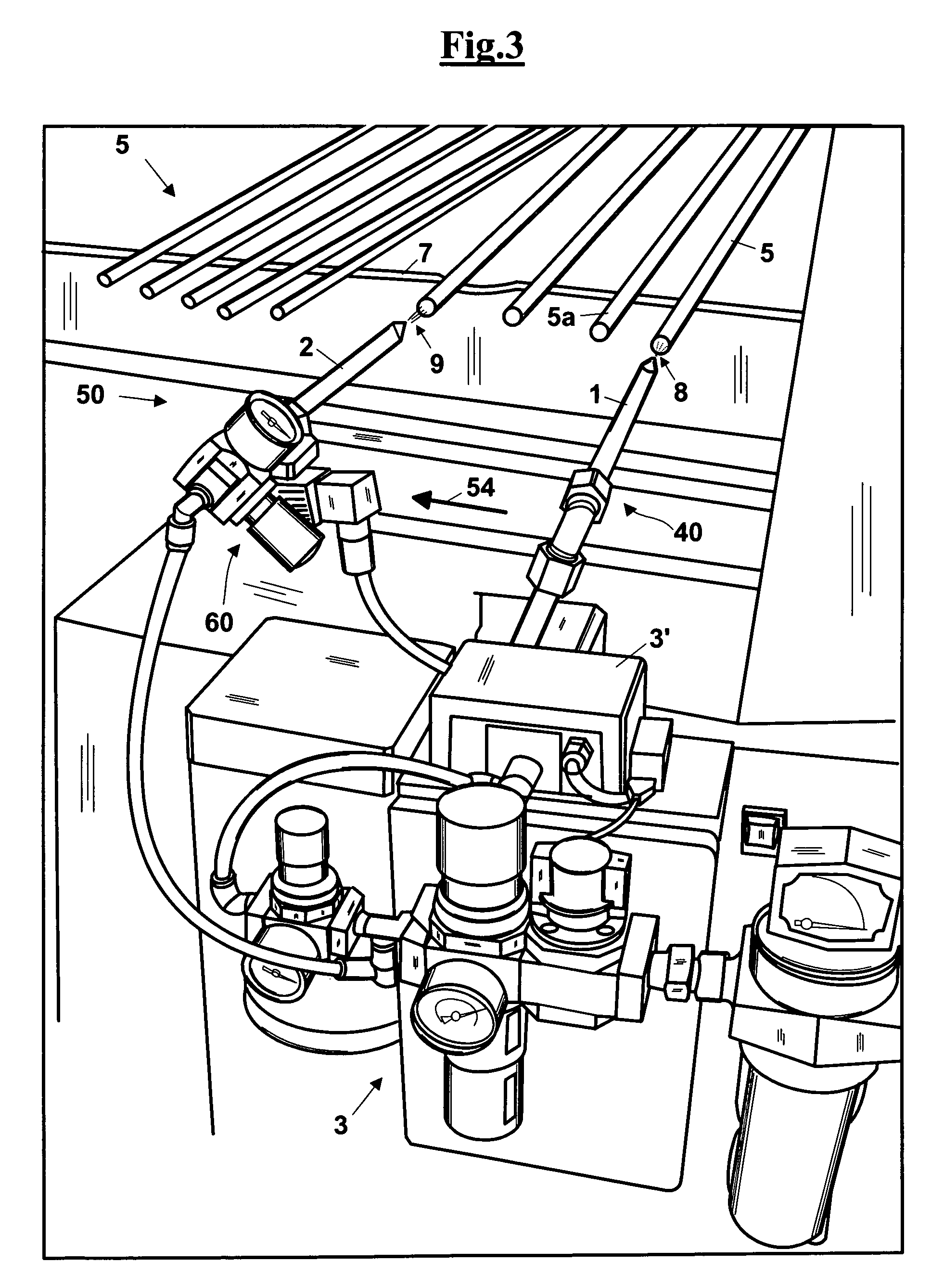Method and device for removing contaminating particles from containers
a technology of contaminating particles and containers, applied in the direction of cleaning process and apparatus, suction cleaners, cleaning using liquids, etc., can solve the problems of contaminating particles, inability to remove those that adhere to the inner surface, and inability to achieve the same ease, so as to reduce the momentarily the force of electrostatic adhesion
- Summary
- Abstract
- Description
- Claims
- Application Information
AI Technical Summary
Benefits of technology
Problems solved by technology
Method used
Image
Examples
Embodiment Construction
[0101]With reference to FIG. 1 a horizontal automatic production system 10 is depicted diagrammatically, which represents the most common, practical, precise and flexible known process for making a glass tube, with diameters and thicknesses that cover most of the needs of the market.
[0102]In particular, the horizontal system 10 consists of a tube of refractory material (mandrel), suitably treated and mounted on a rotating axis 11a of special steel, on which, by a “casting beak”12 a continuous stream of glass 13 flows.
[0103]Then, the glass 13 that flows from the “casting beak”12 and that is suitably fluid and homogeneous to expand about mandrel 11, reaches end 14, where it is blown and starts running as a continuous tube 5.
[0104]In particular, mandrel 11 is enclosed in an oven or “muffle”16 at an predetermined temperature, to ensure a controlled cooling of glass 13 and to avoid size defects in the wall of the tube 5, and has a fixed and controlled speed. In detail, the support axis 1...
PUM
 Login to View More
Login to View More Abstract
Description
Claims
Application Information
 Login to View More
Login to View More - R&D
- Intellectual Property
- Life Sciences
- Materials
- Tech Scout
- Unparalleled Data Quality
- Higher Quality Content
- 60% Fewer Hallucinations
Browse by: Latest US Patents, China's latest patents, Technical Efficacy Thesaurus, Application Domain, Technology Topic, Popular Technical Reports.
© 2025 PatSnap. All rights reserved.Legal|Privacy policy|Modern Slavery Act Transparency Statement|Sitemap|About US| Contact US: help@patsnap.com



